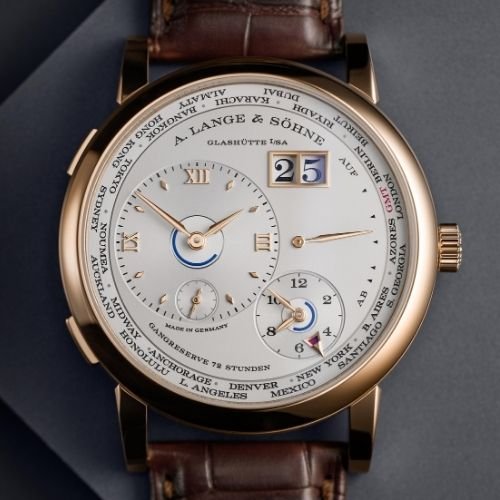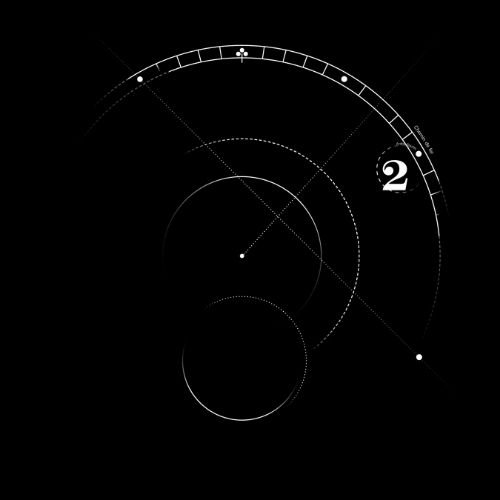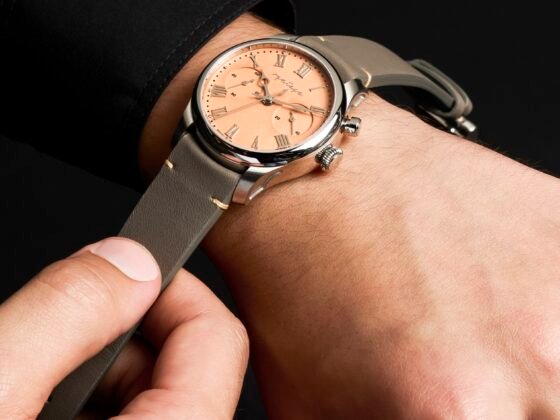An A. Lange & Söhne watch is instantly recognisable because of its distinctive design elements – the typical case shapes, the precisely defined arching of the lugs, the striking hands and the exclusive typography. These corporate design elements are present, in different forms, in all six watch families presented by the watchmaker. Additionally, each family has its own geometric codes for the dial layout.
The design elements and geometric codes of every Lange watch trace their genesis to Ferdinand Adolph Lange, the man credited with laying the foundations of Saxony’s precision watchmaking industry, when he established his manufactory here in 1845. His precious pocket watches are today highly coveted among collectors around the world.
In the aftermath of World War II, the A. Lange & Söhne name nearly vanished from the watchmaking map before the founder’s great-grandson, Walter Lange, managed to relaunch the brand in 1990. Today, Lange crafts only a few thousand wristwatches per year, predominantly in gold or platinum, and feature proprietary movements that are lavishly decorated and assembled by hand. This, and the fact that the brand has developed 66 calibres since 1990, has elevated A. Lange & Söhne to the top-tier of mechanical watchmaking.
Brand icons such as the Lange 1 with the first outsize date in a regularly produced wristwatch, and the Zeitwerk with its precisely jumping numerals display, rank among the company’s greatest successes. Exceptional complications include the Zeitwerk Minute Repeater, the Triple Split, and the most complicated model so far – the Grand Complication presented in 2013 in a six-watch limited edition. The sporty-elegant Odysseus, launched in 2019, is the latest chapter in the distinguished watchmaker’s story.
At A. Lange & Söhne, design has always played an essential role in the development of a watch. In fact, it may be considered just as important as the construction because Lange’s calibre engineers and product designers work closely together in the development of a new timepiece.
This holistic approach requires a consistent design language, which has to take into consideration the interaction of countless details, such as the case shapes, material combinations, arrangement of the displays and typography specifically designed for Lange. This consistency makes it possible to identify at a glance every new model – even without the characteristic arched logo – as a Lange.
In addition, each of the six watch families from A. Lange & Söhne has its own inimitable appearance. This is coded in the geometry that the dial layout is based on. The constructive design logic of the individual watch families becomes apparent when the arbours are connected with lines, and the proportions are mathematically interpreted. The objective clarity that is intrinsic to geometry reflects the values of a brand that orients itself on scientific findings and the classic rules of aesthetics, such as the golden ratio.
LANGE 1
The ordered asymmetry that characterises the design of the Lange 1 represents the search for new paths. The off-centre displays without any overlaps for the time, outsize date and power reserve create a captivating sense of tension. Nevertheless, the dial looks ordered and harmonised.
Among other reasons, this is due to the fact that the arrangement of the displays follows the design rules of the golden ratio and axial arrangement. On Lange 1, the proportion of the diameters of the dial and the hour and minute circles is in the golden ratio. The same applies to the proportions of the outsize date.
In addition, the displays for the outsize date, the power reserve and the subsidiary seconds are arranged on a perpendicular axis on the right. If one link the centre of the hour and minute circle with the seconds subsidiary dial and the outsize date, we get an isosceles triangle.
SAXONIA
In the Saxonia watch family – whose name refers to the brand’s origins – the focus is on the mechanism. The design is correspondingly clear and linear. In contrast to the Lange 1, the dials are arranged with vertical axial symmetry.
Axial symmetry describes a situation where elements on either side of an imaginary line are arranged in a mirror image. Here it applies to the solid-gold hour marker and the slightly recessed subsidiary seconds at 6 o’clock. On the Saxonia models with an outsize date, this is also positioned on the central axis, at 12 o’clock, as a counterweight to the subsidiary seconds.
An exception to this family code is to be found on the Saxonia Datograph chronographs. Here, the central Lange outsize date forms the tip of an equilateral triangle with the two small dials for the subsidiary seconds at 9 o’clock and the precisely jumping 30-minute-counter hand at 3 o’clock.
1815
Recalling Ferdinand Adolph Lange’s birth year, the 1815 watch family emphasises the traditional side of A. Lange & Söhne. Here also, we find that the composition of the dial follows the rules of vertical axial symmetry. In the basic model, the subsidiary seconds – as with the Saxonia – is positioned on the central axis at 6 o’clock. On the 1815 Up/Down, the two small dials for the subsidiary seconds and the power-reserve indicator form a mirror image at 4 o’clock and 8 o’clock.
The stepped bezel design is echoed in a dial that is composed of two or three levels. The slightly recessed central section is a tribute to the historic pocket watches with their enamel dials consisting of several parts, as are the Arabic numerals for the hours, orbited by a railway-track minute scale. In the upper half, the arched A. Lange & Söhne logo picks up on the rounding of the central section. In the 1815 models which feature a calendar display, the subsidiary dials – another stylistic rendering from the age of pocket watches – are arranged in a cloverleaf formation.
ZEITWERK
With its well-thought-out digital display, the Zeitwerk sets itself apart from the multitude of mechanical analogue watches. The dial’s design emphasises the innovative approach that first made it possible to arrange precisely jumping numerals on a wristwatch in the direction of reading from left to right.
The geometric structure of the Zeitwerk is based on the rhombus. The arbours of the power-reserve indicator, the subsidiary seconds, and the two windows of the numerical display are arranged in a diamond. The curved time bridge made of German silver, under which the tens-minute disc and units-minute disc are located, brings together all the time indications in a harmonious unit. That makes it both a constructional and a design element at the same time.
RICHARD LANGE
The Richard Lange watch family reinterprets the scientific observation watch by combining the pursuit of the highest level of precision with the best possible legibility. In the more complex models, including a regulator dial, the three overlapping circles are reminiscent of a Venn diagram at first glance. The largest of them is positioned at the top. Depending on the model, it is dominated by the time unit, which is located in the centre of the relevant watch concept.
With a large minute display, the models with a tourbillon or perpetual calendar feature the classic dial layout of a regulator watch. On the Richard Lange Jumping Seconds shown here, on the other hand, the large dial is reserved for the seconds hand. The arbours of the separate hands for the hours, minutes and seconds form an equilateral triangle.
ODYSSEUS
With the sporty-elegant Odysseus, A. Lange & Söhne not only established a sixth watch family in 2019 but also showed an entirely new side to its character. It was given its own design code and a new movement. The two-part day-of-week and date display stands out on the three-dimensional dial. Opposite the Lange outsize date, which is positioned on the right horizontal central axis, is a day-of-week display of the same size on the left, in a classic double window. The outer verticals of the frame mimic the rounding of the bezel. The dial has three levels, which are highlighted by differently structured surfaces. The Odysseus design incorporates traditional elements of the brand with the subsidiary seconds at 6 o’clock.





















